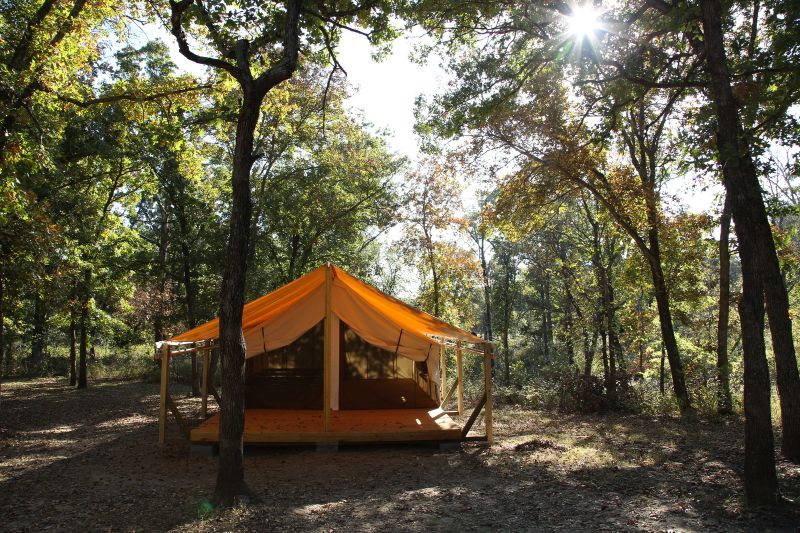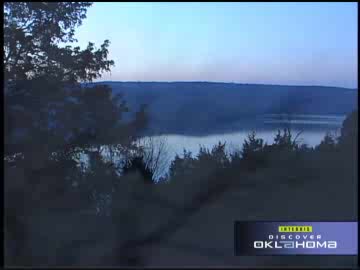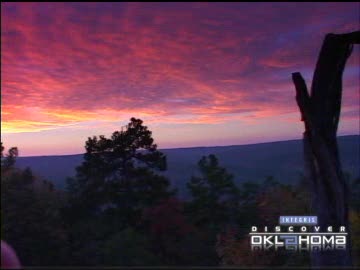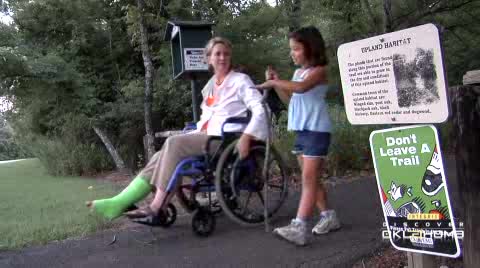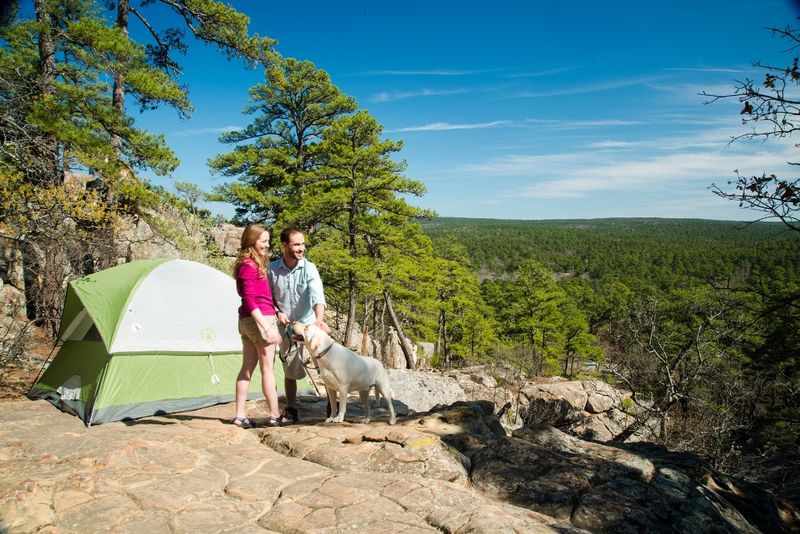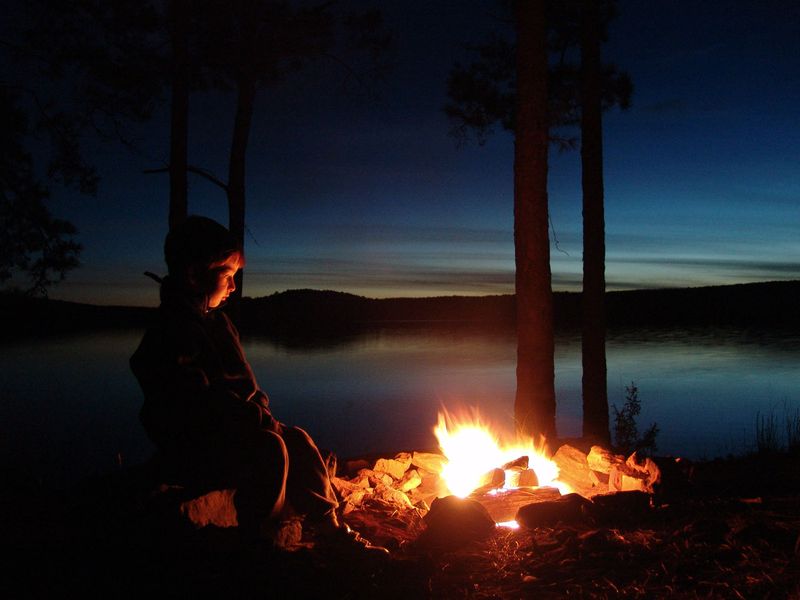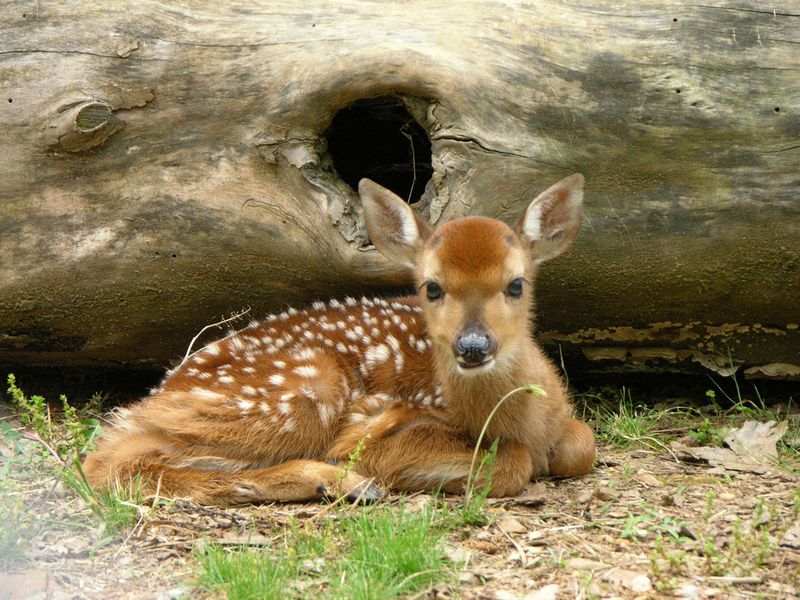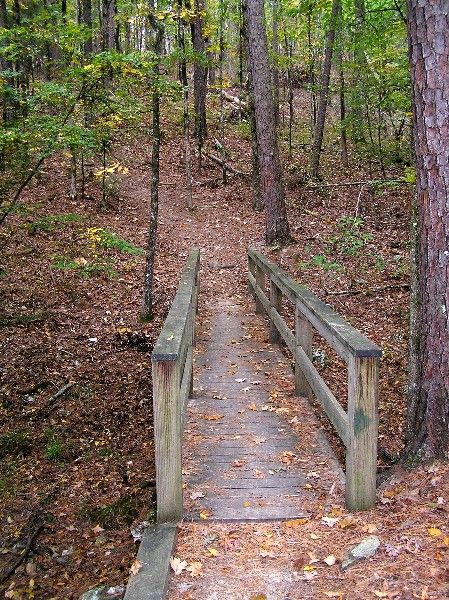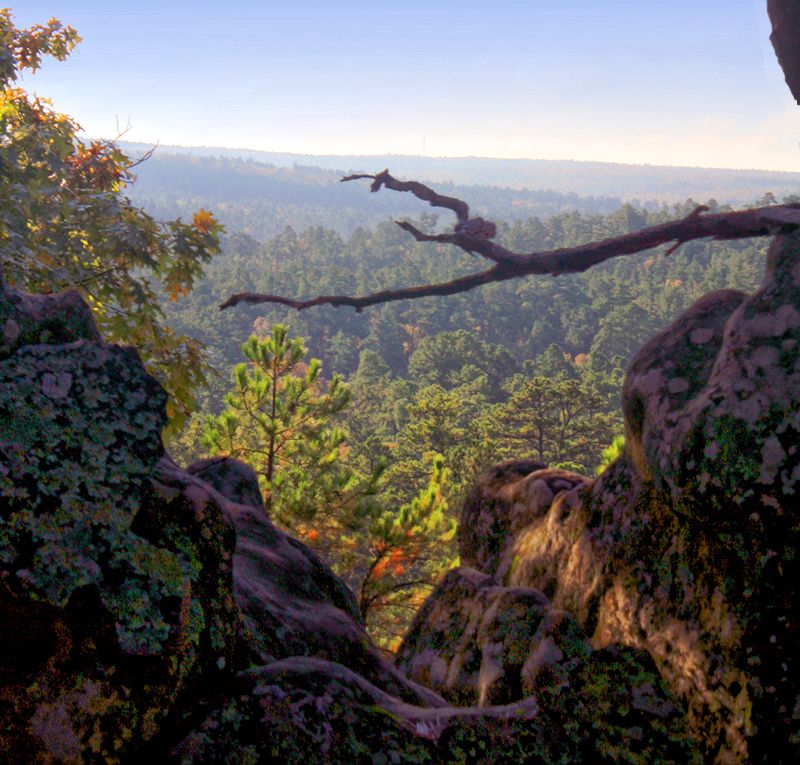If you are new to camping, there’s no better time than the present to become familiar with the basics of tent camping, an inexpensive and easy way to venture out into the wilderness. Set up camp and unplug from the stress of modern life with this beginner’s guide to tent camping in Oklahoma.
Overview: Camping in Oklahoma
Oklahoma's Camping Hot Spots
Oklahoma Camping Tips
What to Pack for a Successful Camping Trip
Setting up Camp: Where to Start
Cooking & Mealtimes
Entertainment & Outdoor Recreation
Overview: Camping in Oklahoma
Tent camping and Oklahoma's outdoor recreation areas go hand-in-hand. From the rugged Wichita Mountains in the west to the pine-covered Ouachita National Forest in the southeast, Oklahoma has a tent-worthy landscape perfect for your next trip into the great outdoors. Not only does Oklahoma lay claim to over 300 days of sunshine per year, but the state is also home to scenic ancient mountains, uncrowded lakes, winding rivers and spectacular sunsets and sunrises, making Oklahoma a great place for camping out in diverse landscapes and communing with Mother Nature.
With more coastline than the U.S. east and west coasts combined and home to some of the best fishing lakes in the nation, much of Oklahoma’s camping is found along Oklahoma’s lakes and waterways. Most Oklahoma state parks are also located around the state’s refreshing lakes, offering access to a wide variety of outdoor activities such as fishing, hunting, watersports, boating, hiking and picnicking. Take the family on a canoe trip down a lazy river or enjoy fresh air on a hiking trail to complete your camping experience.
Oklahoma's Camping Hot Spots
Oklahoma boasts 32 state parks featuring a wonderfully diverse set of landscapes and campgrounds perfect for beginning campers. Most Oklahoma state park campgrounds include conveniences such as comfort stations complete with flush toilets and showers as well as some electric hookups, water supply, fire rings and grill boxes, picnic tables and even playgrounds for the kids. You'll also enjoy nature programs held regularly by the naturalists at several Oklahoma state parks. Explore our Oklahoma State Parks page for complete details, photos and videos.
For details about some of the premier Oklahoma camping areas, see our Ten Great Places to Camp in Oklahoma article. Browse a complete list of Oklahoma campgrounds on the main Camping page and click on the campgrounds icon for details on over 400 statewide tent camping areas.
Oklahoma Camping Tips
* The best time to camp in Oklahoma is during the spring or fall, before the summer heat and humidity kick in fully and before it gets too cool in the late fall. Weather remains mild throughout September and into October, making fall a great camping season. Spring mornings can be chilly, so make sure to dress in layers that you can peel off as temperatures rise throughout the day.
* Summers in Oklahoma can be hot and humid. July and August tend to see peak summer heat, so if you’re camping during these months, remember to pack plenty of water and sunscreen.
* Tent campers will find hundreds of campgrounds around Oklahoma lakes, making the state a great destination for water recreation and fishing lovers. If you plan on fishing, make sure to have a current Oklahoma fishing license. You can purchase your Oklahoma fishing license online or at local sporting goods stores, bait/tackle shops, convenience stores and even large discount centers like Wal-Mart. Note: Children under 16 do not need a fishing license in Oklahoma.
* Most campgrounds in Oklahoma will have both small charcoal grills and fire rings available. If you decide to build a campfire, you should not have a problem finding adequate firewood. Please check with park staff, a ranger or camp host before gathering wood from the area surrounding your campground. Some parks and campgrounds allow campers to gather wood from the forest floor, while others prohibit the practice and offer firewood for sale. Do not bring wood from outside the park, as the wood may carry harmful insects or tree diseases into the park.
* Remember to observe all local burn bans. Check the current burn ban status before lighting your campfire.
* Arrive early. Most Oklahoma state parks and many other campgrounds do not take tent camping reservations. Therefore, camping availability is on a first come, first served basis.
* Leave no trace behind when you leave. Preserve Oklahoma’s beautiful outdoor spaces by leaving the ecosystem completely undisturbed when you pack up camp. Pick up after yourself, use established fire rings, keep campfires small or cook on a camp stove, and remember to wash dishes in wash tubs at least 200 feet away from all streams, lakes or waterways. For the safety of the animals and campers, please keep your distance from wildlife and do not feed the animals. Help Oklahoma maintain its natural resources for future generations!
What to Pack for a Successful Camping Trip
Any experienced tent camper knows that planning is the secret to a successful camping trip. Before you set out with your coolers and sleeping bags, take a moment to get organized with this checklist.
In order to fully enjoy the great outdoors, campers must remember to bring all the basics with them: Shelter and bedding materials, clothing and toiletries, food and water, entertainment and outdoor recreation items
But avoid overpacking and remember that the more you pack, the more you'll have to keep up with and the more you'll have to lug back home. The first step is to consider how far your campsite will be from your vehicle. If you plan on hiking to your destination, you’ll need a far lighter load than if your tent is set up near your car. Plan for your specific camping trip, and you’ll be thankful you did when it’s time to set up camp!
Below you will find a list of camping essentials that will help you organize the perfect Oklahoma camping trip.
Shelter & Bedding
Tip: Pack a season-appropriate sleeping bag. During the summer months, a lightweight sleeping bag will do, but if you’re camping in winter, you’ll need one with a lower temperature rating. Always err on the side of it being cooler than expected, in case the temperature drops overnight.
Tip: Always check your tent at home to detect any problems. Broken poles and ripped seams are much easier to fix at home than in the wilderness.
Tip: An air mattress or sleeping pad can be a very worthwhile investment in your comfort when camping without cots.
___Tent
___Ground cloth or tarp
___Sleeping bag
___Sleeping pad or cot
___Pillow
Clothing
Tip: When camping, it is best to dress in loose layers. It is highly important to stay dry and comfortable, so be prepared to peel off layers before you start sweating.
Tip: Make sure to wear closed-toe shoes. A pair of broken-in, sturdy hiking boots is ideal.
Tip: If you’ll be hiking through vegetation, wear long-sleeved shirts and pants to protect yourself from irritants like poison ivy and ticks.
Tip: Evenings in the campground can be much cooler than expected even during the summer months, so don't neglect to pack a sweater, sweatshirt or light jacket even when the days are hot.
Tip: Bring along a wide-brimmed hat to shade your head and face on sunny days and help keep ticks out of your hair if hiking under trees.
Tip: Oklahoma storms can pop up quickly, so don't be caught off guard when hiking or camping. Bring along a small, folded rain poncho or improvise with a large plastic trash bag if necessary.
___Jeans/Pants
___Sweatshirt/Sweater/Jacket
___Tennis shoes or hiking boots
___Water shoes
___Heavy socks if hiking
___Swimsuit
___Hat
___Rain poncho or raincoat
___Laundry bag
Toiletries & Bath Items
Tip: Steer clear of perfumes or fragrant lotions. While you may use it daily at home, it will only attract bugs and insects in the great outdoors.
Tip: Don't forget to bring along your own supply of toilet paper when camping in remote locations.
Tip: A sunburn can ruin your camping trip, so be sure to bring along plenty of sunscreen and apply it frequently.
Cooking & Dining
Tip: Pack only what you’ll actually use when it comes to planning your camp kitchen. You’ll need more items if you plan on cooking from scratch over a campfire than if you’re planning simple fare such as roasted hot dogs and hamburgers. Plan accordingly using the multi-purpose list below.
Tip: Do not pack anything in glass containers. These can break, creating a huge mess and safety hazard. Reusable plastic is best.
___Cooler(s)
___Ice
___Camp stove w/ propane
___Charcoal
___Kindling/Firestarter logs
___Can opener
___Skillet
___Cooking pots (one large, one small)
___Mixing bowl
___Long-handled barbecue tools
___Hot dog roasting sticks
___Pot holders
___Silverware
___Knives
___Plates/Bowls
___Drinking cups
___Wooden spoons
___Tongs
___Spatula
___Lightweight cutting board
___Heavy duty aluminum foil
___Heavy duty Ziploc bags
___Paper towels
___Tablecloth and clamps
___Trash bags
___Dish pan or washtub
___Biodegradable dish soap
___Pot scrubber
Miscellaneous Items
Tip: Save money by making your own waterproof matches, an essential item that will ensure your campfire won't go dark prematurely. Simply dip regular, household matches in candle wax to cover 1/8-in. below the head, pinch the wax to form a waterproof seal and allow to cool completely.
Tip: Even if you plan on staying at a well-known camping area, pack a compass, map and/or GPS device just in case you wander too far from your campsite. Make sure each child has a whistle and knows how to use it in case they get lost.
___Camp chairs
___Lantern
___Flashlight
___Fishing gear
___Map
___Compass
___GPS device
___Camping knife
___Batteries in airtight container
___Hammer
___Axe
___Shovel
___Waterproof matches
___Bug spray
___Rope
___Clothes pins
___Sunblock
___Camera
___Charged cell phone for emergencies
___Plastic bottle/canteen
___Sunglasses
___Binoculars
___Whistle
___Duct tape
___Lip balm
___Bird/wildlife guides
___Cards/games
First Aid Kit
Tip: It’s best to always be prepared for injuries when camping. It’s much better to have a first aid kit and not need it, than to need it and not have one on-hand!
___Personal medications
___Bandages
___Antibiotic cream
___Aspirin/Tylenol
___Gauze
___Burn ointment
___Hydrogen peroxide
___Antihistamine or allergy medicine
___Calamine lotion
___Elastic wrap
___Tweezers
Setting up Camp: Where to Start
So you’ve packed your gear, loaded up family and friends, and arrived at your campground. It’s time to start camping! Your first order of business before the real fun begins is to set up camp. There are three things you need to accomplish before dark:
1. Set up your tent.
2. Collect firewood if building a campfire.
3. Set up your camp kitchen.
Choosing the Perfect Campsite
When searching for the perfect campsite, look for a level site that is free of rocks and tree roots. Also look for sites with natural drainage, ensuring that everyone will stay nice and dry during the entire trip. In hot weather, look for open sites that will allow breezes to make their way throughout camp; look for tree-covered sites for privacy and shade. Pitch tents away and upwind from a campfire; sparks can easily burn through nylon tents. Remember: always arrive to your campsite early in the day and set up camp before anything else. Many camping trips have been ruined by late campers trying to put up tents by lantern light!
Setting up Your Tent
Lay down a ground cloth or tarp on the ground where you plan to place your tent. This will protect your tent from the wear and tear of the forest floor, while acting as a barrier against moisture and rain. If you don’t have an extra tarp lying around, an old shower curtain or clear polyethylene sheeting (found at most hardware stores) will do – just cut the ground cloth in the shape of the tent floor, less one inch on all sides. This will make sure that the tent overhangs the sheeting, allowing moisture to drain away from your tent instead of getting trapped in-between the tent and ground cloth.
Unpack your tent and follow all tent instructions. Face the tent entrance downhill so rain won’t run in unexpectedly. If it’s windy, face the entrance downwind to avoid dust blowing inside the tent. It’s always a good idea to secure your tent with pegs or stakes.
Once your tent is successfully erected, set up your sleeping pads and sleeping bags inside the tent. Make sure to vent your tent by unzipping window or vent openings. This will create airflow and cut down on the heat and humidity inside the tent.
Setting up Your Kitchen Area
When selecting the site for your camp kitchen, make sure that it is sheltered from the wind, located away from the tent area and sunny. Designate a five foot radius around your campfire or stove as an area free from running and playing, stray equipment, unneeded food and wood. While camping, always keep all of your pots and kitchen equipment in one place, making mealtime convenient and fast so you can get back on the trail or out on the water as soon as possible. Always keep food in animal-proof containers for your protection and theirs. Keep a trash bag handy for litter, and take care of food debris immediately to avoid attracting insects and pests.
Cooking & Mealtimes
Everything just seems to taste better when cooked and eaten outdoors! Food and campfire meals can vary widely by each individual camper: some campers get by with nothing more than a cooler filled with drinks, sandwiches and snacks, while other campers enjoy cooking homemade meals over the flames of a well-built campfire. The food you take on your camping trip will depend on what’s well-liked at home and what type of trip you’re planning. If you are camping near your vehicle, feel free to take all of your favorite foods with you, but if you will be packing your supplies in, you'll have to plan a little more carefully.
Here are some general tips that will make mealtime a success:
* Keep in mind that you will burn more calories during your camping trip than at home and pack accordingly. For example, plan for ½ lb. of trail mix per person, per 8-hour hike.
* Pack a separate cooler for drinks so you don’t have to open the food cooler too often.
* Block ice will last longer than cubed ice and works better for food coolers, while cubed ice is fine for drink coolers.
* It is important that you keep perishable food cool during your trip. Freeze anything you can prior to packing your cooler. Frozen meat, candy, nuts and bread will keep other foods colder longer.
* Do not freeze fresh eggs, vegetables or fruit. These can simply be chilled.
* If camping near your vehicle, store your coolers inside your vehicle at night or in animal-proof lockers installed by the campground to protect your stash from any unwanted critters.
* Pre-measure and pre-mix dry ingredients ahead of time and place in heavy-duty Ziploc bags. Label each bag.
* Plan on convenient meals by preparing soups, stews or chili ahead of time. Fill heavy-duty Ziploc bags with your prepared food, freeze them and keep them in your cooler. For a quick meal, simply reheat and serve.
* Don’t forget the heavy-duty aluminum foil. There are countless uses for it at camp!
* Food and crumbs will attract insects and wildlife, so clean up spills immediately and don’t leave food lying around. Keep open boxes or bags in coolers or plastic bins. Also, do not dump bacon grease, peelings or any other food debris on the ground. Instead, burn them in the fire pit.
Staples: Pack instant coffee, tea, nonfat dry milk powder, hot chocolate mix, flour or biscuit mix, sugar, margarine, mustard, ketchup, salt, pepper, spices and cooking oil.
Breakfast Ideas: Fuel up for the day’s activities with a hearty camp breakfast. Go simple with pancakes and syrup (kids love them!), or try breakfast burritos with tortillas, scrambled eggs, bacon, cheese and a little salsa. Also consider packing granolas, dry cereals, dried fruits, instant hot cereals like oatmeal or cream of wheat, bacon, eggs, sausage, potatoes, pancake mixes and biscuits. Or, try your hand at making simple campfire donuts using the instructions below.
Campfire Donuts
Ingredients: canned ready-to-bake biscuits, cooking oil or shortening, cinnamon, sugar
Bring along a few cans of ready-to-bake biscuits, a Ziploc bag of pre-mixed cinnamon and sugar and your preferred cooking oil or shortening as well as a fryer utensil. Heat the oil or shortening in a pot over the camp stove or campfire, then cut each biscuit into quarters and drop them into the hot oil. When the bottoms of the "donuts" are done, they'll pop over on their own. When they are golden brown on both sides, dip them out of the oil, blot them with a paper towel, shake them in the cinnamon and sugar bag and then savor your warm donut bites.
Lunch Ideas: It’s best to plan for simple, grab-and-go lunches like sandwiches with summer sausage or GORP (Good Ol’ Raisins and Peanuts). Also consider packing crackers, bread, dry salamis and bologna, cheeses, tuna, nuts and seeds, peanut butter, jelly, trail mix, fruit, jerky and protein bars. A simple homemade trail mix includes 2 cups cereal, 1 cup chopped nuts, 1 cup seeds, 1 cup raisins and 2 cups of chocolate chips.
Dinner Ideas: Dinner is a special time each evening when everyone can gather around the campfire and share stories about the activities of the day. You can’t go wrong with hot dogs or hamburgers cooked over a campfire, or change it up with barbecued chicken and Frito chili pie. Cook an old-fashioned “Hobo Stew” by wrapping chicken or ground beef, seasoning, potatoes and vegetables in individual foil packets. Cook near the fire for 30-45 minutes, turning every 10 minutes. Consider packing soups, stews, chili, dehydrated mashed potatoes and veggies.
Dessert Ideas: Camping and s’mores go hand in hand. Pack enough graham crackers, marshmallows and bars of chocolate to go around and let the roasting of marshmallows begin! Try making banana boats for another simple dessert that’s popular with both kids and adults. Find the recipe for banana boats below – they’re delicious!
Banana Boats
Ingredients: bananas, chocolate chips, miniature marshmallows
Cut each banana lengthwise from tip to tip, making sure not to cut all the way through to the other side. Open each banana and stuff it with chocolate chips and mini marshmallows. Wrap each banana in heavy-duty aluminum foil and place near the campfire for 5 minutes, or until the chocolate is melted and the marshmallows have puffed up. Open the foil and eat with a spoon! Don’t stop there - creative campers can add optional ingredients like peanut butter chips, peanuts, crushed graham crackers and more!
Water: When camping, don’t assume that the water is safe to drink even if it comes from a spigot. Make sure that you are consuming only water from sources marked as potable water and don't contaminate these water supplies with any other use. Water can be treated with filters, water purification tablets or packets of iodine. You can also bring water to a rolling boil for 10 minutes, or plan to bring jugs of spring water. If participating in outdoor activities, plan on one gallon per person per day.
Entertainment & Outdoor Recreation
After setting up camp, it’s time for the real fun to begin! Spend your days taking part in popular outdoor recreation activities such as hiking, mountain biking, fishing, boating, hunting, birding, swimming and fun on the water. While these activities establish the cornerstone of your camping experience, you’ll be wise to remember the importance of keeping everyone entertained at camp, as well.
Here are some more ideas for camping entertainment:
* Star gazing - have everyone point out their favorite constellations and check out the moon with a pair of binoculars or a small telescope.
* Storytelling by campfire - whether telling scary stories or sharing memories, storytelling is a time-honored classic.
* Photography - Oklahoma's outdoor areas are prime hot spots for beautiful photos.
* Bring cards, chess sets or checkers. Everyone loves board games!
* Don’t forget Frisbees, kites and footballs for high-flying fun on a windy day or a rousing game of catch between family and friends.
* Cloud watching - nothing says relaxation quite like clear, blue skies and a restful hammock.
* Music - bring your acoustic guitar and treat everyone to popular tunes while you have a captive audience around the campfire.
The TravelOK.com team wishes you safe travels and happy camping!









